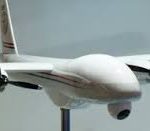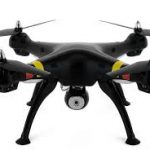The term drones conjures up different visions for different people. For ordinary people-it is a hobbyist’s delight, for companies-it delivers material to customers, for sportsmen- it offers an aerial view of the game in progress not normally available and for the dreaded Taliban fighters -it means death.
The word drone evolved out of the sound made by a bee which can hover and strike. There are essentially two classifications of drones. One is UAV standing for ‘Unmanned Aerial Vehicle and the second is UCAV standing for Unmanned Combat Aerial Vehicle. Since there are multiple functions involved we will examine both the options separately.
UCAV These drones are primarily used in warfare for remote operations without risk to any pilot. Also the small size and design of the drones makes it ideally suitable for covert operations ranging from photography of enemy positions, surveillance and delivery of bombs. It has been used extensively in the interiors of Pakistan and Afghanistan to flush out terrorists hiding in the mountains. The Americans have also used it, to target terrorists training camps and have achieved notable success.
The development of drone technology for warfare several started several decades ago. The military drone as we know it today was

invented by John Foster Stuart a nuclear physicist and an amateur model airplane hobbyist. Since the Yom Kippur war of 1973, Israel has successfully deployed drones to deplete the anti-aircraft missiles of the Syrians, used it to spy on the Syrian air-force and effectively neutralize it. Since then they have pioneered the use of drones extensively and are now the leading manufacturers and exporters of drones in the world. Naturally for any offensive weapon, there has to be an antidote weapon. As drones are a bundle of electronics and sensors, it can also be jammed from following the original signal, diverted or destroyed if required through what is called a dronegun.
Using drones instead of fighting a conventional ant-terrorist war with tremendous cost and loss of lives, could be effective both for

surveillance of the border and for destroying the hideouts of known terrorists. India is keen to sign an agreement with USA for purchase of Predator drones. India has also endogenously started a research program for the use of drones under the name ‘Rustom and ‘Nishant’ ’ pioneered by DRDO and has been fairly successful. It could be programmed to also patrol the border areas on a 24 hour basis with infra-red for night vision, thereby ensuring the capture of terrorists, sneaking into the country. The sea-routes could also be protected with frequent over-flights. As the Prime Minister of India has reiterated the ‘Make in India ‘program for indigenous manufacturing –Drones could be one of the most ideal for development and deployment for a host of different applications.
.UAV It is basically an unmanned flying vehicle using aerodynamics principles controlled remotely or by in-built software. Jeff Bezos of Amazon created a stir in late 2013 ,when he confirmed the development of drones for use in delivering goods to customers. In December 2nd week 2016, Amazon made its first delivery by drone to a farmhouse in Cambridge, UK.The development of drones has come a long way since then and have been adapted to a number of uses as per requirements. As the drone does not have to carry a pilot and the design is primarily to carry a payload, it could be made light and without many of the safety features essential, if manned. They are thus built of less sturdy materials but with inherent robust control systems. The quadcopter designs are now standard for most such drones. Small drones use lithium-polymer batteries. Advances in electronics has enabled the building of system-on a -chip technology to control flight and exteroceptive sensors for other parameters like distance, location etc.

The potential for drone use is tremendous and here are few-
- Farmers could use drones for monitoring the health of their fields. They could spot diseases earlier and take remedial steps. They could also be used to spray fertilizers.
- They could assist in conservation of wildlife in tracking/catching poachers . They could track animals and their population.
- Journalists could use drones for news gathering.
- They could be very useful in search and rescue operations during floods , landslides and other similar calamities
- Medical supplies could be transported to remote places.
- They are extensively used in film making with fantastic aerial shots not normally seen at ground level
- Ideal for forest fire detection
- Land surveying
- Hurricane and tornado forecasting.
- It could be used in hostage situations for study and consequent action.
- Transfer of organs for transplanting urgently.
- Builders use them for tracking the various construction sites, especially in remote areas.
- Drones are extensively used in for surveying archeological sites , map them and photograph them before expeditions.
Drone technology is evolving so much that a university in US, Embry-Riddle Aeronautical industry offers a Bachelor’s course in unmanned systems.
There is no end to what we could modify the drones for endless number of applications.
All UAV’s have to be registered with the concerned authorities like the FAAS in USA for commercial operations. It is restricted to daytime operations without overflying people and at speeds less than 100 mph. There are rules for registering the owner of UAV’s in terms of age, responsibilities and usage.
We all remember the cartoon series ‘Jetsons’ predicting the use of such drones way back. Imagination is infinite and there is no predicting how drones could evolve further.

